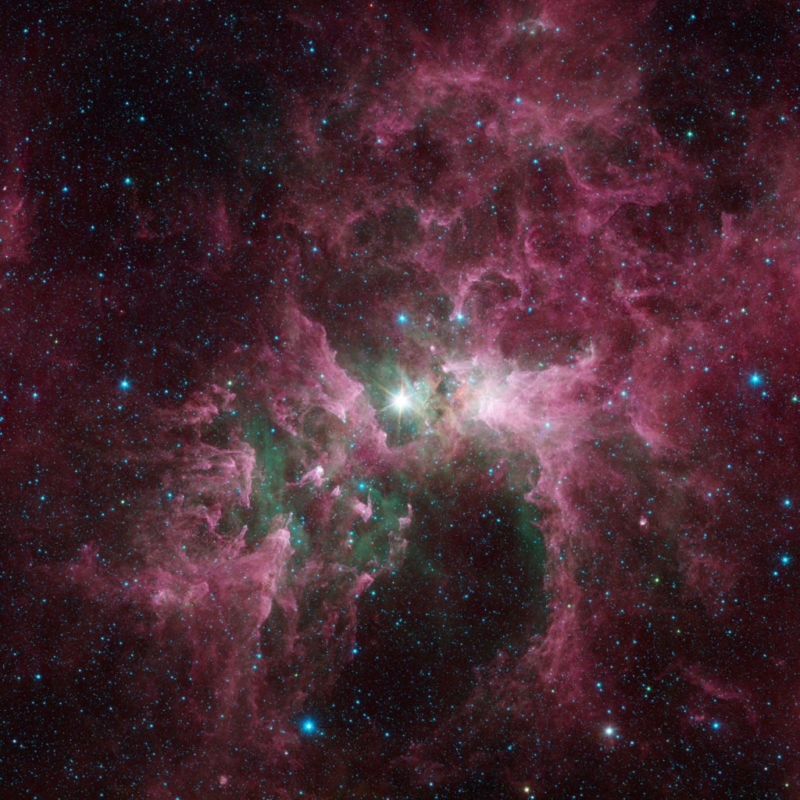Just what's happened to our neighborhood's most violent star, η Carinae?
Astronomers propose a merger within a triple-giant-star system.
JOHN TIMMER - 8/6/2018, 4:50 PM

The massive stars of ? Carinae are enshrouded in a cloud of their own creation.
During the 1840s, an apparently unremarkable star began to brighten. Over the course of roughly a decade, it became one of the brightest stars visible from Earth. Often, brightening like that means a supernova has destroyed the star, but ? Carinae (or Eta Carinae) was still there when it was all over, and it underwent a number of smaller events over the ensuing century and a half.
Modern astronomy hardware has revealed that the resemblance to a supernova goes deeper than these early observations. Imaging of the complex nebula that surrounds ? Carinae has revealed that a giant star had ejected roughly 10 times the Sun's mass worth of material into its surroundings during what's now known as the Great Eruption. Imaging also revealed that the system is a binary, containing a second enormous star in an eccentric orbit around the first.
We can't go back in time to observe the Great Eruption with modern instruments. But a team of researchers has been tracking its progress using echoes of light reflected off some dust that was more than 100 light years away from the star. The echoes reveal some material moving at a phenomenal speed—roughly 20,000 kilometers a second. That, combined with other unusual features of the system, led them to propose that there used to be three stars in ? Carinae, and the outburst was the result of two of them merging.
A troublesome history
Coming up with a model that explains ? Carinae is difficult in part because it's a system of such extremes. The smaller star is anything but small, having a mass that's likely to be in the neighborhood of 50 times that of the Sun. Its five-year orbit takes it in close proximity to its companion, a monster that could be more than 100 solar masses. Both of them are embedded in the Homunculus Nebula, the product of earlier eruptions that holds about 15 solar masses of material in its two main lobes, which roughly align with the stars' orbit.
More:
https://arstechnica.com/science/2018/08/researchers-study-echoes-of-a-star-expelling-10-suns-of-material/
